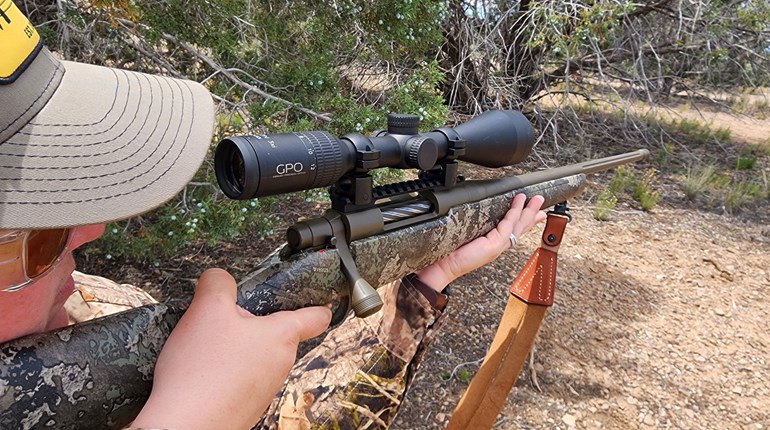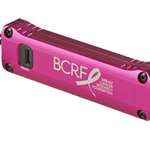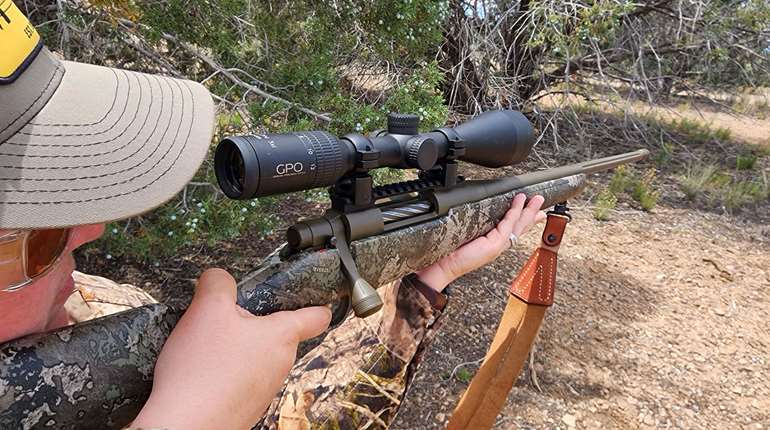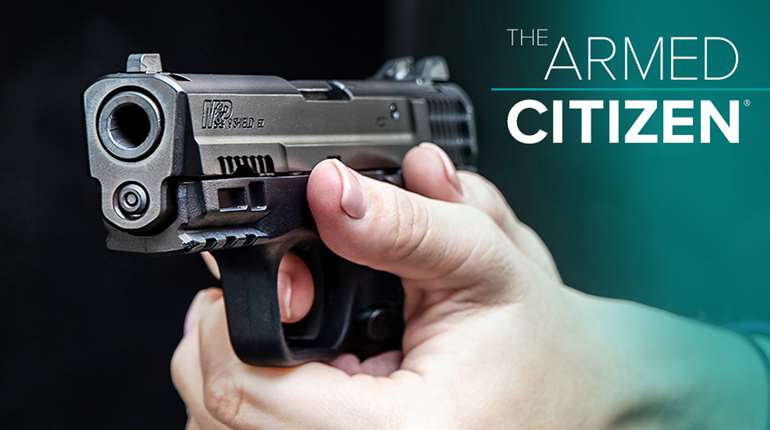
Years ago while I was working for a huge corporate conglomerate, our branch was called into a meeting where an HR representative gave us a lecture on workplace safety, including rules about firearms being forbidden on company property. She then played a Department of Homeland Security video on “Run, Hide, Fight.” At the time, the video infuriated me, because the “fight” portion was all about yelling at an attacker (seriously) and improvising weapons in an active shooter situation—using things like your office chair or a trash can to fight the attacker if you had to. It struck me as completely ridiculous that a company would refuse to allow its employees to carry the most effective self-defense tool available—a firearm—while encouraging us to fight off an active shooter with staplers and recycling bins.
While that portion of the advice still makes me angry just thinking about it, the concept of the video itself—run, hide, fight—is actually smart advice. Whether you’re facing an active shooter or any other kind of violence in a public place, those three steps are really your best options, and they’re in that specific order for a very good reason.
Running is better than hiding. If you can escape a dangerous situation without getting involved, you probably should. If you can’t, hiding so that you go unnoticed until the coast is clear is usually the next best choice—and when you hide, remember the difference between cover and concealment. Cover stops bullets; concealment merely keeps you from being seen.
Fighting is a last resort because of the danger involved. Even if you are armed with your concealed-carry firearm, taking on an attacker with an already-drawn gun can go sideways in a million ways you haven’t even thought of. Getting into a gunfight introduces a huge number of variables, and you have no guarantee that you’ll win the fight or emerge unharmed. Even if you do stop the attacker without getting hurt yourself, your life will never be the same, from the ensuing legal complications to the mental health repercussions you’ll deal with as long as you live. That said, sometimes it’s your only option—but it’s your last option.
The wrinkle in run, hide, fight comes in when some concealed carriers feel a moral obligation to protect those around them. I’ve written before about how I’m no sheepdog—I just want to get home safely to my family, and I’m not interested in inserting myself into dangerous situations and playing the hero. This is a conviction you’ll have to work out for yourself, and every situation is different based on who is involved. If you feel as though it’s your duty to move “fight” to the top of the list, God bless you. Be careful.
For the rest of us, the DHS’s run, hide, fight guidelines are actually pretty sound, if you take their definition of “fight” with a huge grain of salt. They expand on these three tactics a bit:
Run: Have an escape plan in mind, and evacuate if you can do so safely, regardless of whether or not others follow. Leave your things behind if they will slow you down, and while it’s good to help others escape if you can, DHS recommends you do not attempt to move wounded people (use your judgement here based on what’s going on). They also recommend you keep your hands visible, follow any law enforcement instructions and call 9-1-1 when you are safe if it’s needed.
Hide: Find a hiding place out of the threat’s view, preferably behind closed and locked doors. The more rooms you can put between you and the threat, the better, but if possible, try not to trap yourself or cram yourself into a space where your options for further movement will be limited. DHS recommends silencing your phone and remaining quiet. Call 9-1-1 if you can, even if you can’t speak, leaving the line open for the dispatcher to listen.
Fight: DHS recommendations are to fight “As a last resort, and only when your life is in imminent danger.” They recommend “acting as aggressively as possible against him/her,” “throwing items and improvising weapons,” “yelling” and “committing to your actions.” I’ll agree with that part—if you’re going to act, do it decisively and give it everything you’ve got.
So while the government and I have very different definitions of what effective fighting looks like, I agree that fighting should be your last resort when you’re facing violence. After all, the only way to truly win a gunfight is to not get in one.














































